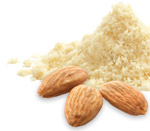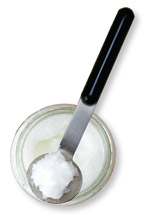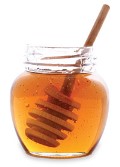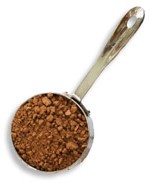A Paleo pantry
This article was originally published in November 2013
For the growing number of people avoiding grains, refined sugar and dairy, the holiday months can be difficult. But it’s possible to make delicious baked goods with alternatives — think almond and coconut flour in place of all-purpose white flour, and coconut oil in place of butter.
Honey and maple syrup are natural stand-ins for white sugar, and add body and moisture as well. Here are some building blocks for a pantry of wholesome ingredients that will meet a range of dietary needs — without sacrificing flavor!

Almond Flour
Almond flour is made from blanched, finely ground nuts. It’s high in protein and rich in vitamin E, many B-vitamins, manganese, potassium, calcium, iron, magnesium, zinc and selenium. PCC sells it in packages and in bulk.
Tips:
- Substitute almond flour 1:1 for wheat flour, but keep in mind that because almond flour does not contain gluten, it doesn’t yield the elasticity or hold together the way wheat flour does.
- Monitor heat. Nut flours burn easily so when baking with them, keep the temperatures lower by about 25° F to 50° F and bake slightly longer.
- Store almond flour in your refrigerator or freezer. It will keep for a month in the refrigerator and 6 to 8 months in the freezer.

Coconut Oil
Coconut oil is aromatic and buttery, rich in antioxidants and immune-boosting lauric acid. The saturated fats in coconut oil make it more heat-stable than other plant-based oils, so it can withstand oven temperatures when baking, making it an ideal cooking fat for stir-fries, sautés and baking.
Tips:
- Use coconut oil at a 1:1 ratio to replace vegetable oils, margarine, shortening and/or butter in baking.
- Don’t refrigerate. Keep coconut oil in a cool, dark cupboard. Refrigeration makes the oil hard and difficult to measure. Most baking recipes call for melting the coconut oil in order to incorporate it into the recipes, but you first have to measure the amount the recipe calls for in solid form.
Coconut flour
Baking with coconut flour produces light, airy cakes and other baked goods. Coconut flour is made from grinding coconut pulp after it has been squeezed for coconut milk, which produces a soft flour. It’s high in fiber and fat, so it’s very filling. It’s also a good source of manganese, which helps you utilize many nutrients and maintain optimal blood sugar levels.
Tips:
- If your recipe calls for 3/4 cup to 1 cup grain-based flour or nut flour, substitute 1/4 cup to 1/3 cup coconut flour.
- You will need to increase the number of eggs and amount of liquid when using coconut flour because it’s very absorbent. Coconut flour tends to be clumpy, so sifting the flour before mixing it into a recipe will help you avoid finding clumps in your baked goods.

Natural sweeteners
Honey, maple syrup and molasses are good options for natural, unrefined sweeteners. These sweeteners tend to keep foods moist and tender. That’s why they’re great for baking cookies and cakes that need to stay fresh for several days.
Tips:
- When baking with honey or maple syrup, lower the oven temperature by 25° F to 30° F to prevent over-browning.
- Less honey or maple syrup is needed because they’re sweeter than white sugar. If a recipe calls for 1 cup sugar, you can substitute 3/4 cup honey or maple syrup. Reduce the liquid in the recipe by 1/4 cup.
- For every cup of sugar, use 1 1/3 cups molasses. Because molasses is acidic, add 1/2 teaspoon of baking soda to the recipe if it’s not already used, and reduce the liquid in the recipe by 1/3 cup. Using molasses as a substitute for sugar in baking will change the color and sweetness profile of the recipe.

Other ingredients to keep in your pantry:
- Fresh dates (store in your refrigerator) — Add sweetness and also act as a binder in nut-based crusts.
- Full-fat, unsweetened coconut milk — Can be used to add moisture to baked goods or to make a dairy-free “whipped cream.”
- Unsweetened dark chocolate (also cacao powder and cacao nibs) — Anything less than 100-percent has sugar added. You can sweeten 100-percent dark chocolate using natural sweeteners (right).
